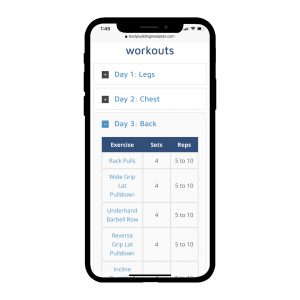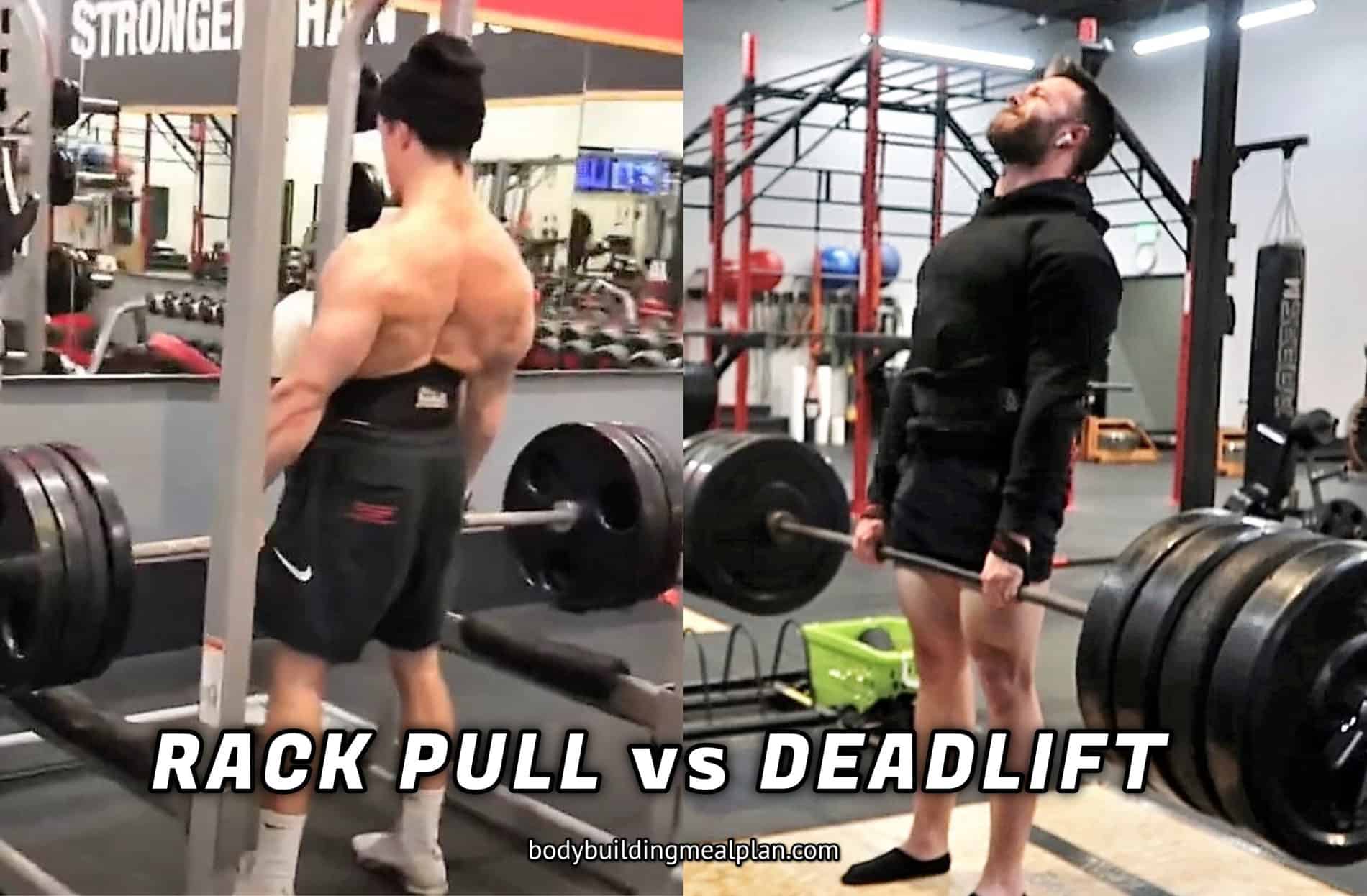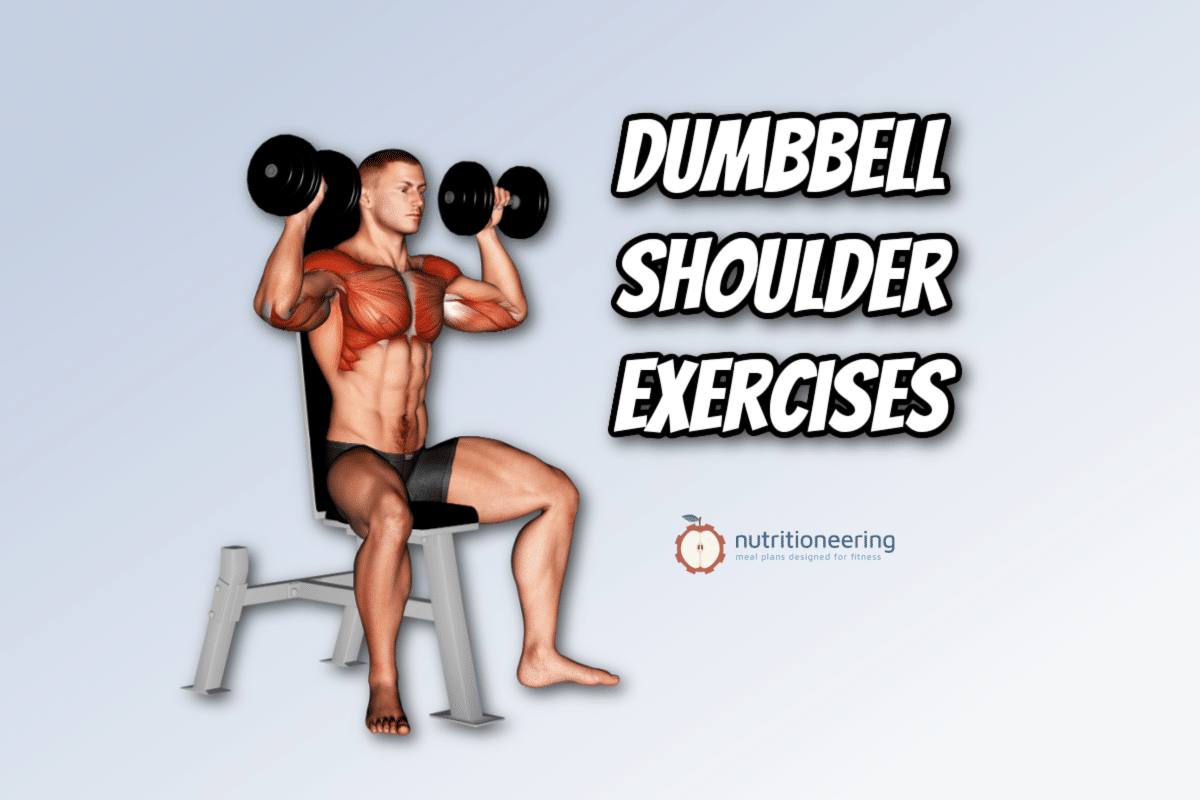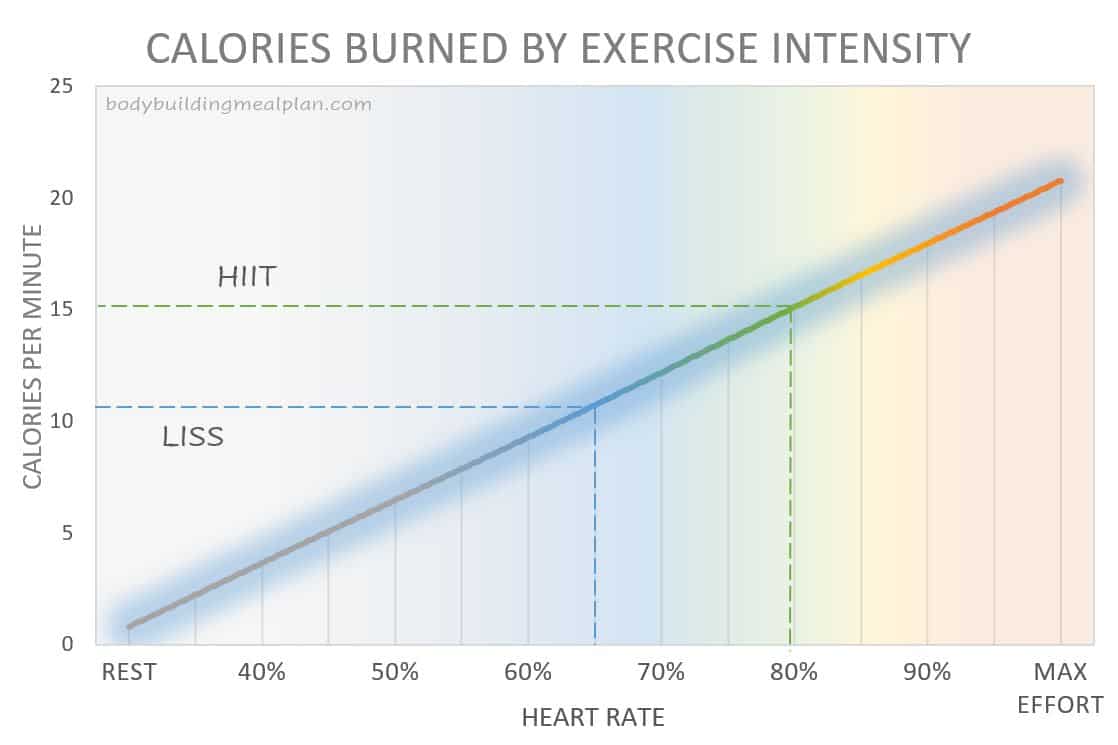Hex Bar Deadlift
Deadlifts are arguably the best exercise for overall body development and power building. But conventional deadlifts can leave you with scraped shins and a sore lower back.
So I’m going to show you how to do an alternative to the conventional exercise called the hex bar deadlift. With this exercise, you can take the stress off your back and emphasize your lower body.
Continue reading to learn more about how to deadlift using the hex bar.
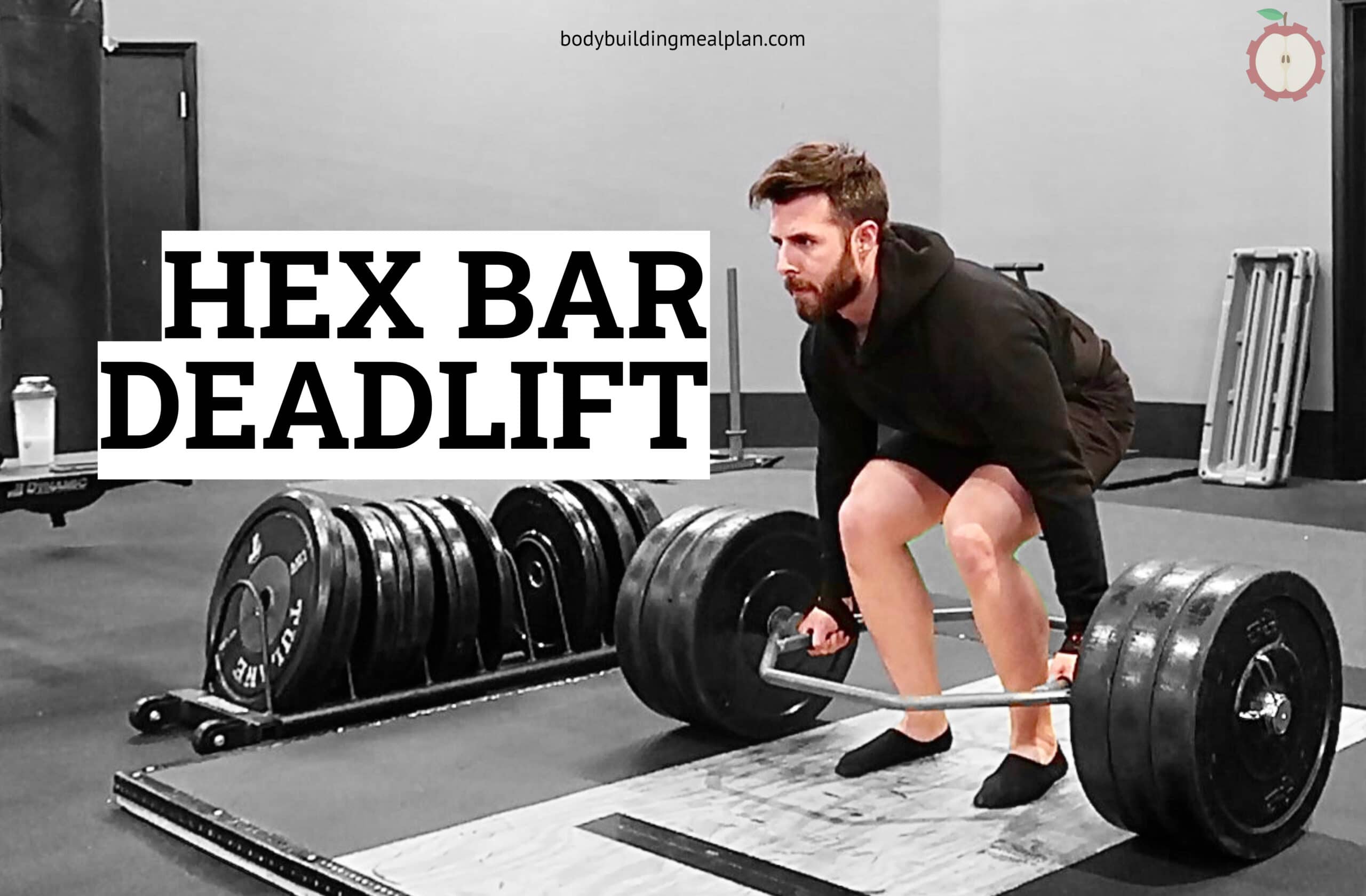
What Is A Hex Bar?
A hex bar is a type of barbell that is named for its hexagonal shape. From geometry class, may remember that a hexagon is a 6-sided polygon.
This shape means that you stand in the center of the bar. And that allows for different body mechanics compared to straight barbells.
A hex bar is sometimes called a trap bar because it’s good for doing shrug exercises. But you can use this bar for many other exercises, including deadlifts.

Hex Bar Handles
One of the unique attributes of the hex bar is that it has handles on either side of your body. This handle position enables you to use a neutral grip instead of a pronated or supinated grip.
In addition, some hex bars have an extra set of high handles. These handles are elevated from 4” to 8” above the height of a standard barbell.
The high handles shorten the range of motion and change the body mechanics during a deadlift, as I’ll explain later.
Hex Bar Weight
Hex bars can weigh anywhere between 45lbs and 60lbs, depending on the material, size, and handle configurations.
By comparison, Olympic barbells weigh 44lbs and powerlifting bars weigh 45lbs. So you could be lifting more weight with a hex bar.
Hex Bar vs Barbell
Another key difference between the hex bar and standard barbell is how it affects your body position. Moreover, how the position of your body changes the mechanics and muscles worked.
With a regular barbell, the weight sits in front of your shins, which means you must lean slightly forward at the start of the deadlift. Whereas the hex bar sits further back behind your shins.
Therefore, your body stays in a more upright position at the start of the movement.
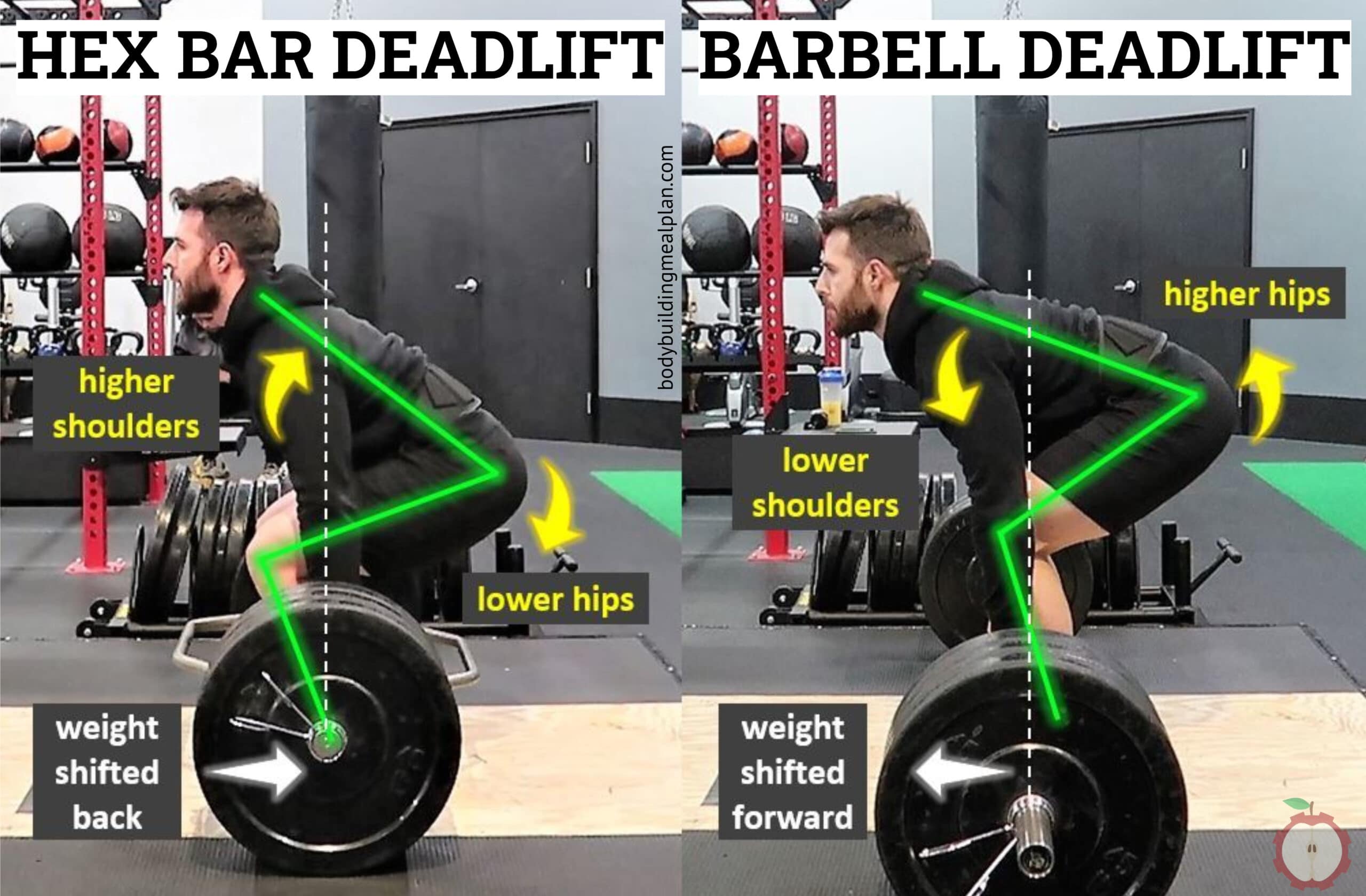
Hex Bar Deadlift Benefits & Limitations
Hex bar deadlifts have some definite advantages over regular deadlifts. Like shifting the center of gravity back to more evenly distribute the load.
However, that’s not to say the hex bar version is better than the straight bar! The hex bar has limitations as well.
Pros
- The bar doesn’t hit against your shins
- Shifts center of gravity back
- More evenly distributes the load
- Takes the strain off your lower back
- Gets more quad activation
- Hands in a more neutral position
Cons
- Not as good for building hamstrings and glutes
- Makes deadlifts more like the squat movement
- High handles reduce the range of motion
- No control over grip width
Hex Bar Deadlift Muscles Worked
As with any deadlifts, a hex bar deadlift works most of the muscle groups on the backside of your body. Including the hamstrings, glutes, erector spinae, lats, and traps.
However, the reduced hip flexion means you get less low back, hamstring, and glute activation than conventional deadlifts. And you work more quadricep due to the greater knee extension.

How To Do A Hex Bar Deadlift
To do a hex bar deadlift, start by standing in the middle of the bar. Then grab the handles with your palms facing in.
Note: having your hands centered on the handles will keep the bar from tipping forward or backward.
Now stand with your feet shoulder-width apart or slightly narrower. Bend at the knees and drop your hips while keeping your back flat.
Next, pull the bar up by extending your knees and driving your hips forward while maintaining a straight back. Lower the bar under control back to the floor and repeat.
To recap, here are the step-by-step directions:
- Stand in the middle of the bar
- Grab the center of the handles with palms facing in
- Bend at your knees and drop your hips with your back flat
- Extend your knees and drive your hips forward while keeping your back straight
- Lower the weight back to the starting point
- Repeat for the desired number of reps
Hex Bar Deadlift Video
My YouTube channel has dozens of videos showing you how to do a variety of bodybuilding exercises. You’ll learn how to target and build specific muscle groups in 90 seconds or less. Click HERE to subscribe or click on the button below!
Hex Bar Deadlift Form
With the hex bar deadlift, you have more control over the bar relative to your body. And that enables you to do deadlifts while reducing stress on your back when done properly.
At the start of the movement, I recommend you align the bar with your ankles. This bar position is 1-2” further back than the conventional deadlift, which allows you to keep your back more upright.
From here, drop your hips down so that your back is at roughly a 45-degree angle to the floor. This body position results in a greater knee bend and takes the load off your lower back.
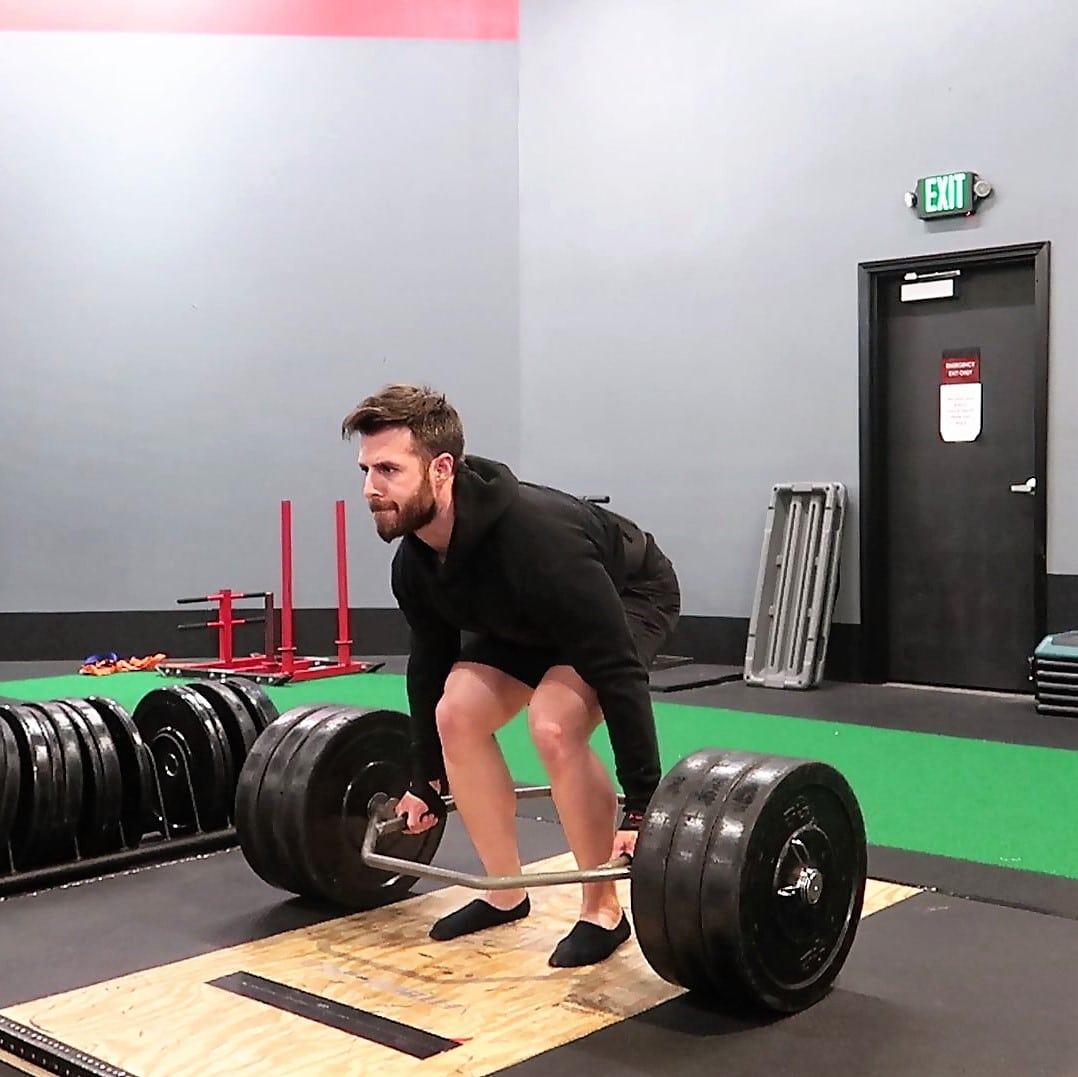

Now, think about driving through your legs as you lift the bar off the floor. The push your hips forward extend your body to the compete upright and locked out position.
Lower the weight straight back down to the point you started from. At the bottom, I suggest pausing for a second before the next rep. This reset mitigates the bounce, so you start from a dead stop.
Custom Nutrition & Workout Plan
Get a personalized meal plan built to fit your body and lifestyle. Including a custom workout routine designed around your fitness goals.
With your custom plan, you will finally be able to burn fat, build muscle, and transform your body. All this for just $19.99!
Click here to choose your plan.
Hex Bar Deadlift Variations
There’s more than one way to do the hex bar deadlift. Each of the variations below changes the movement and the muscles worked.
Block Pull Or High Handle Hex Bar Deadlift
A block pull is where you place a box or sturdy object under the weight plates of the deadlift bar. The blocks raise the level of the bar and shorten the range of motion.
With a shorter ROM, you further reduce the involvement of the hamstrings at the beginning of the movement. As a result, you end up isolating the back muscles.
Using the high handles on certain hex bars results in a very similar shortened range of motion. But the exact height depends on the bar as well as the diameter of the weight plates you use.
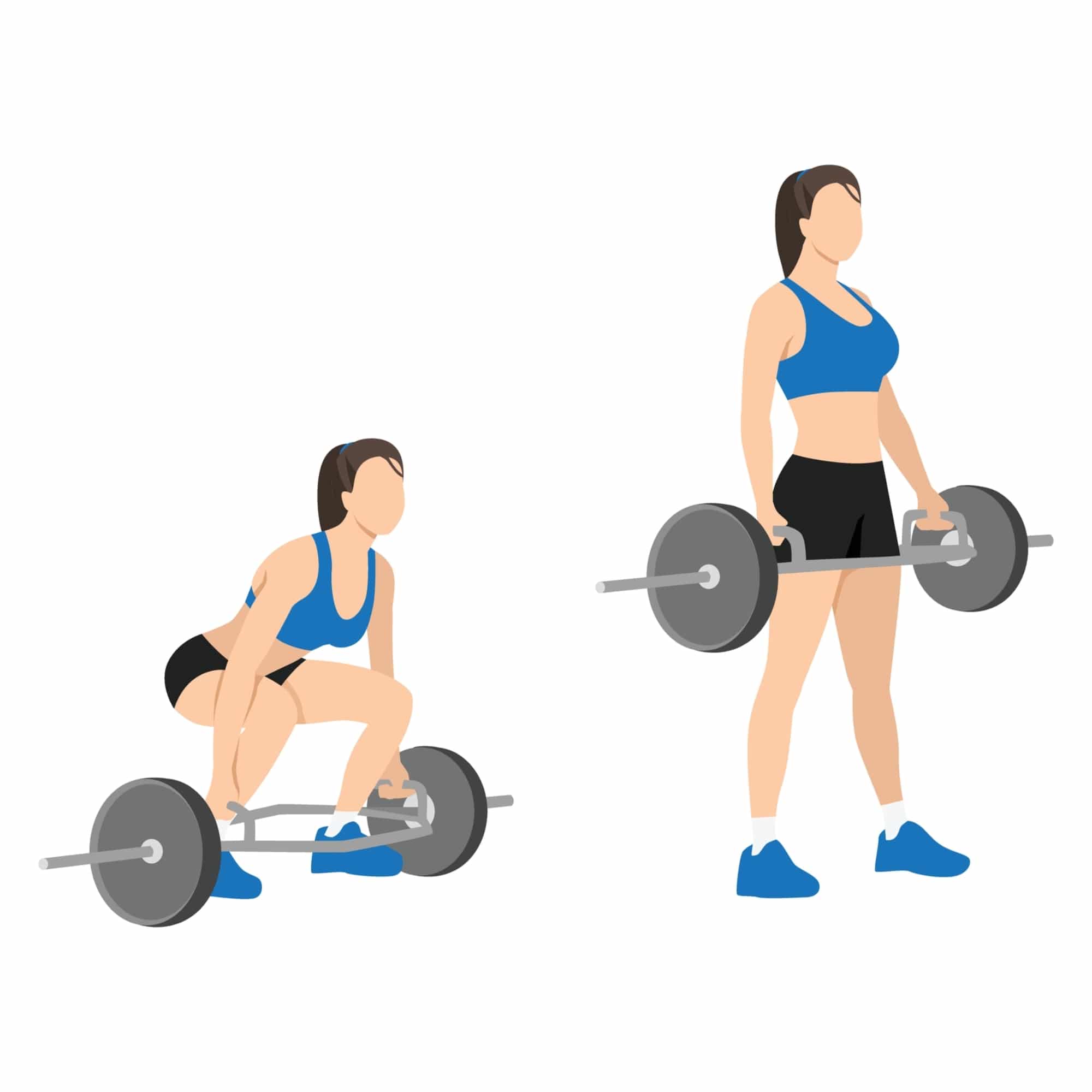
Deficit Hex Bar Deadlift
On the other end of the spectrum is the deficit deadlift. This variation is where you stand on a 0.5-3″ box or platform while keeping the bar on the floor. With your feet elevated, you increase the range of motion.
The larger ROM increases the involvement of the hamstrings in the first part of the movement. So it can be a useful way to target hamstrings if you don’t have a straight deadlift bar.
Hex Bar Deadlift Alternatives
It’s important to know that you don’t have to do deadlifts with a hex bar. There are several other deadlift alternatives using machines, bars, or dumbbells.
Smith Machine Deadlift
A Smith machine deadlift can come in handy if you’re learning the movement or workout at a gym that doesn’t have free weight barbells.
In this version, the bar travels on vertical guides, so you don’t have to control the weight from front to back. Another benefit is that this helps to isolate the major muscle groups of the back and hamstrings.
Barbell Deadlift
Of course, the granddaddy of power exercises is the conventional barbell deadlift. With this version, you maximize the recruitment of the entire posterior chain.
Dumbbell Deadlift
The dumbbell deadlift is another good option if you’re limited on equipment, just starting, or working around a back problem.
With dumbbells, you can use a pronated grip like barbell deadlifts. Or you can use a natural grip like hex bar deadlifts.
In addition, you have more control over the starting position relative to your body. So you can target more hamstrings or more quads.
Rack Pulls
One of my favorite back-building exercises is rack pulls. This is a partial range of motion exercise like block pulls. But you start with the straight barbell resting on the safety bars of a power rack.
Again, the shorter ROM enables you to isolate the back muscles while reducing lower-body involvement. And you can load the bar with a hefty weight to trigger serious growth.
Rack Pull vs Deadlift
The hex bar deadlift can be a good alternative to conventional deadlifts when working around back pain or targeting more quads. However, you should still use regular barbell deadlifts if possible.
Along with deadlifts, I recommend including rack pulls to strengthen your back and the top half of your deadlift. Click here to learn more about rack pull vs deadlift differences, or click the image below.
With this information, you’re well on your way to building your upper and lower body. If you found this article helpful, check out some of the other workout tips below!



